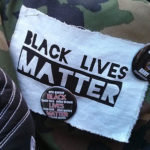Here’s a sentence I never thought I would write: I agree with Ronnie Floyd.
The outspoken Arkansas pastor serves as president of the Southern Baptist Convention, and he dropped a bombshell at a recent event when he proposed the SBC’s International Mission Board and North American Mission Board ought to merge into one global missions enterprise. But that’s not all: He also suggested not all state Baptist conventions and local associations need to survive.
 Mark WingfieldCan you feel the institutional self-protection alarms sounding yet? Of all the forces that have resisted change in our lifetime of epic religious churn, denominational bodies head the list. In Baptist life, that means mission boards, state conventions and area associations. Meanwhile, churches and the individuals who attend those churches continue to find denominational bodies of all shapes and sizes less relevant. That’s old news by now.
Mark WingfieldCan you feel the institutional self-protection alarms sounding yet? Of all the forces that have resisted change in our lifetime of epic religious churn, denominational bodies head the list. In Baptist life, that means mission boards, state conventions and area associations. Meanwhile, churches and the individuals who attend those churches continue to find denominational bodies of all shapes and sizes less relevant. That’s old news by now.
What’s new news is for a prominent insider to say the emperor isn’t wearing any clothes. One of the reasons Floyd cited for suggesting fundamental change is if denominational structures were being created today, they would respond to different needs.
Here’s what Floyd is right about: Today’s needed functions don’t match yesterday’s structures. And yet, I will testify from personal experience trying to get a hearing for such a novel idea within a denominational body is tough sledding. The most frustrating experience of my own years of interaction with denominational work came through service on a blue-ribbon panel formed to set a new course for our state Baptist convention a few years ago.
Hard choices
The reality was hard choices that needed to be made could not get a hearing as long as those dependent upon the institution controlled what happened to the institution. Any time someone suggested eliminating one of the multitude of programs weighing down the state convention, a staff member would approach the speaker at a break to explain why that very program was essential to someone somewhere and never could be cut.
But the final death knell to streamlining came not from a staff member but from the lobby of smaller churches. And here is where the SBC will face its greatest challenge in severe restructuring as well.
Denominational life in American religion today resembles something like the distribution of wealth in our nation: Membership and influence increasingly are concentrated in a few larger congregations that don’t need or care about denominations, while smaller congregations still need denominational help but can’t financially sustain those denominations alone.
Sign up for our weekly edition and get all our headlines in your inbox on Thursdays
Statisticians tell us the majority of congregations in America are small in membership, but the majority of Americans who attend church attend large congregations. Put another way: The majority of congregations served by denominational bodies are small churches, but the majority of people who attend church within those denominations attend large churches.
In the Baptist General Convention of Texas, for example, 6 percent of the state convention’s 4,492 congregations in 2014 accounted for 51 percent of all people attending worship in BGCT churches. These top 6 percenters are congregations that average 500 or more in weekly worship.
Why it matters
Why does this matter? Here are four reasons:
• The larger the church, the less it needs from a denomination. Larger churches are more likely to do their own missions work, find their own curriculum, do their own training and, in some cases, train their own clergy.
• Larger churches give less money proportionately to denominations than smaller churches. In the old days, SBC churches were encouraged to give 10 percent of their budgets to denominational causes. As congregations grow larger and require more staffing and programming to keep growing larger, proportionately less money becomes available to hand off to denominational bodies. It is easier for a small church to justify giving away 10 percent of a $100,000 budget than for a large church to justify giving away 10 percent of a $10 million budget. Start handing out $1 million allocations to denominational bureaucracies, and someone in church leadership is going to object.
• Smaller churches need resources they can’t afford on their own. While larger churches have little need for denominational consultants, trainers or pre-packaged programs, these remain vital to congregations that can’t be self-supporting.
• Ethnic congregations tend to be smaller. In Baptist life, most of the large churches are Anglo congregations. For a number of reasons, including culture and finances and locations, non-English-speaking churches tend to be smaller—and require more denominational support. And here’s the real rub: The greatest numerical growth among Baptists today is among ethnic congregations.
What’s the answer, then? I don’t know. But I do know Ronnie Floyd is right in suggesting Southern Baptists—and all religious bodies—need to be willing to ask hard questions about infrastructure.
If you were creating a support network for Baptist churches in America from scratch today, how would you do it?
Mark Wingfield is associate pastor of Wilshire Baptist Church in Dallas. Baptist News Global (https://baptistnews.com/) distributes his column.














We seek to connect God’s story and God’s people around the world. To learn more about God’s story, click here.
Send comments and feedback to Eric Black, our editor. For comments to be published, please specify “letter to the editor.” Maximum length for publication is 300 words.